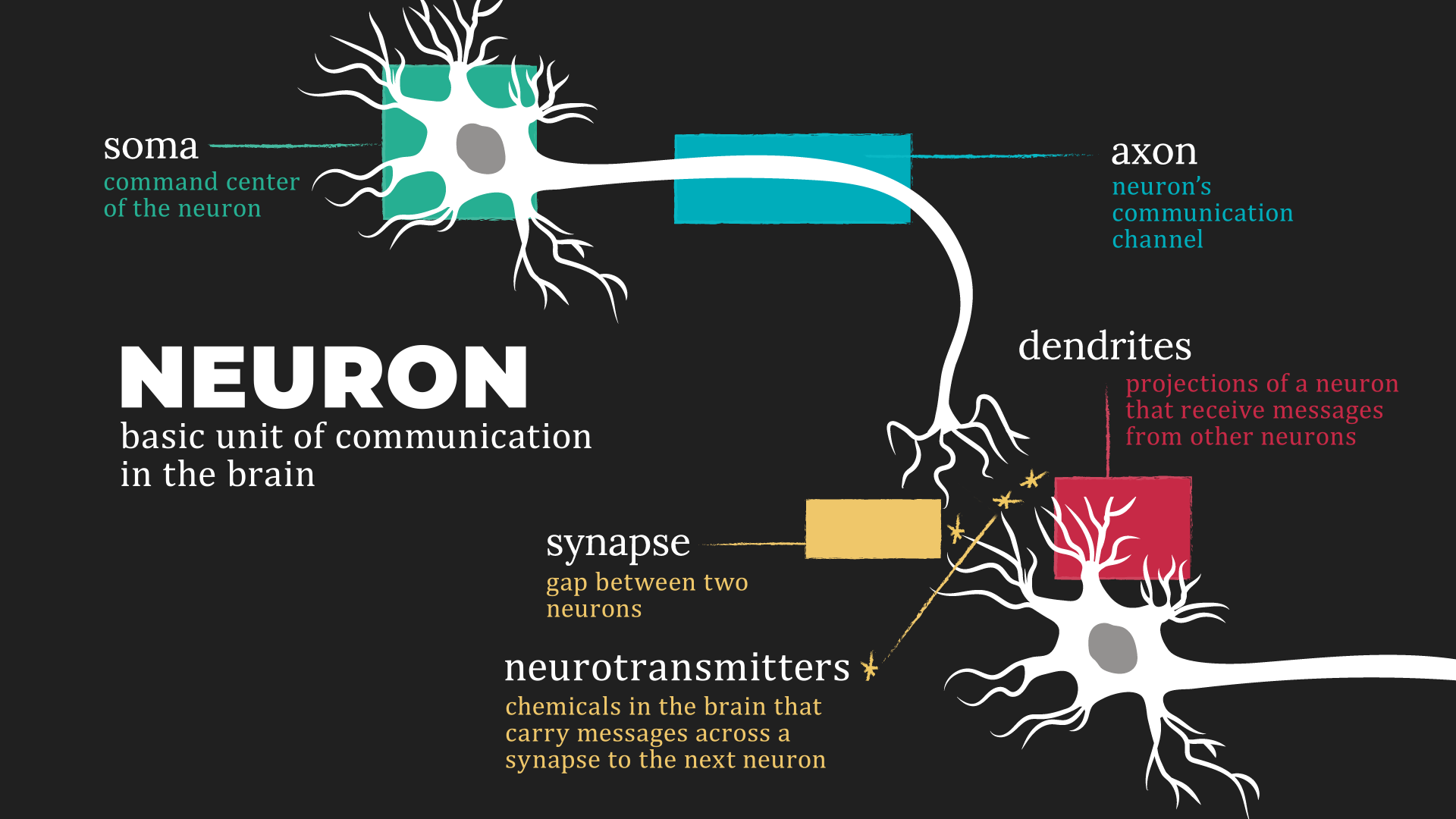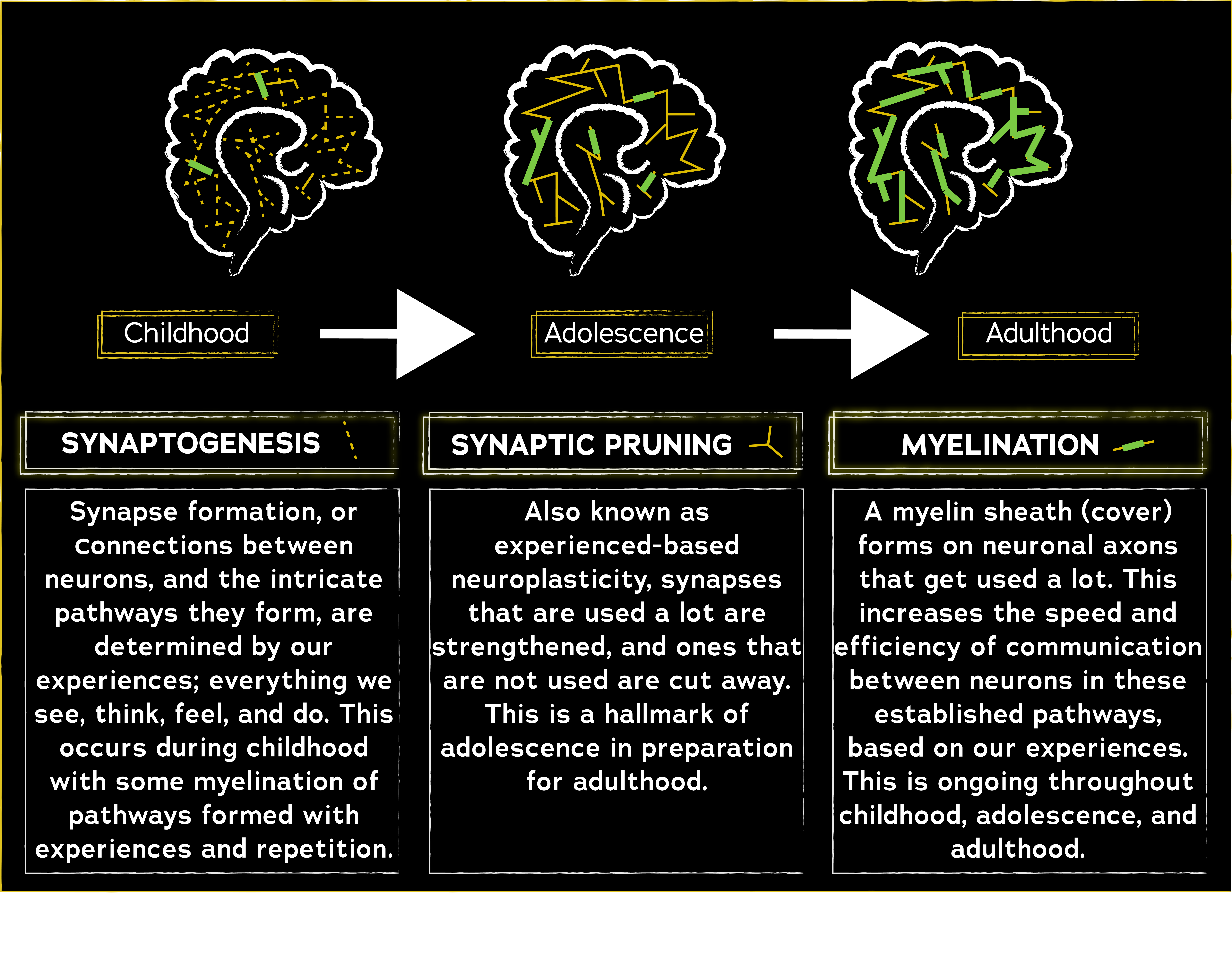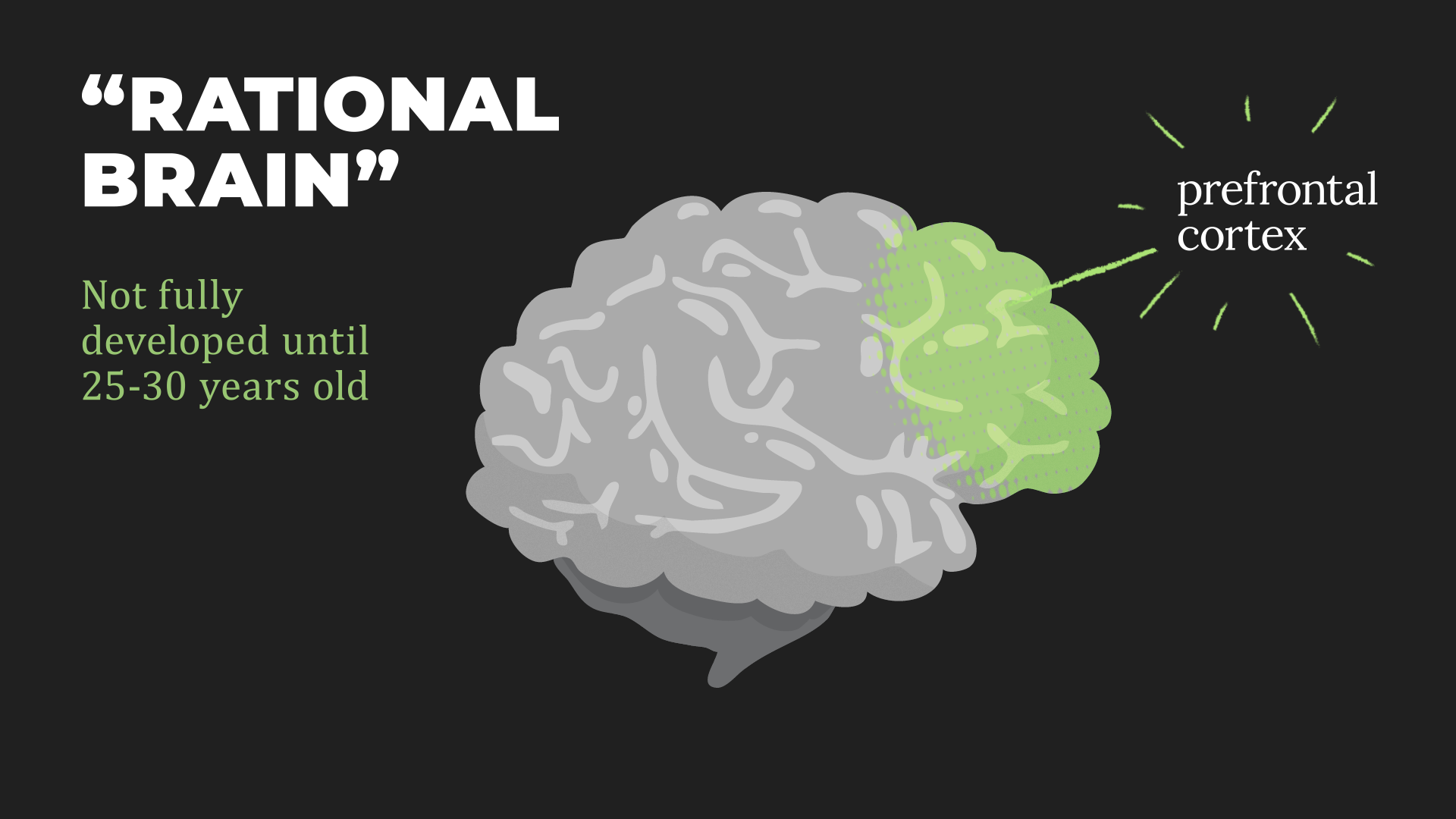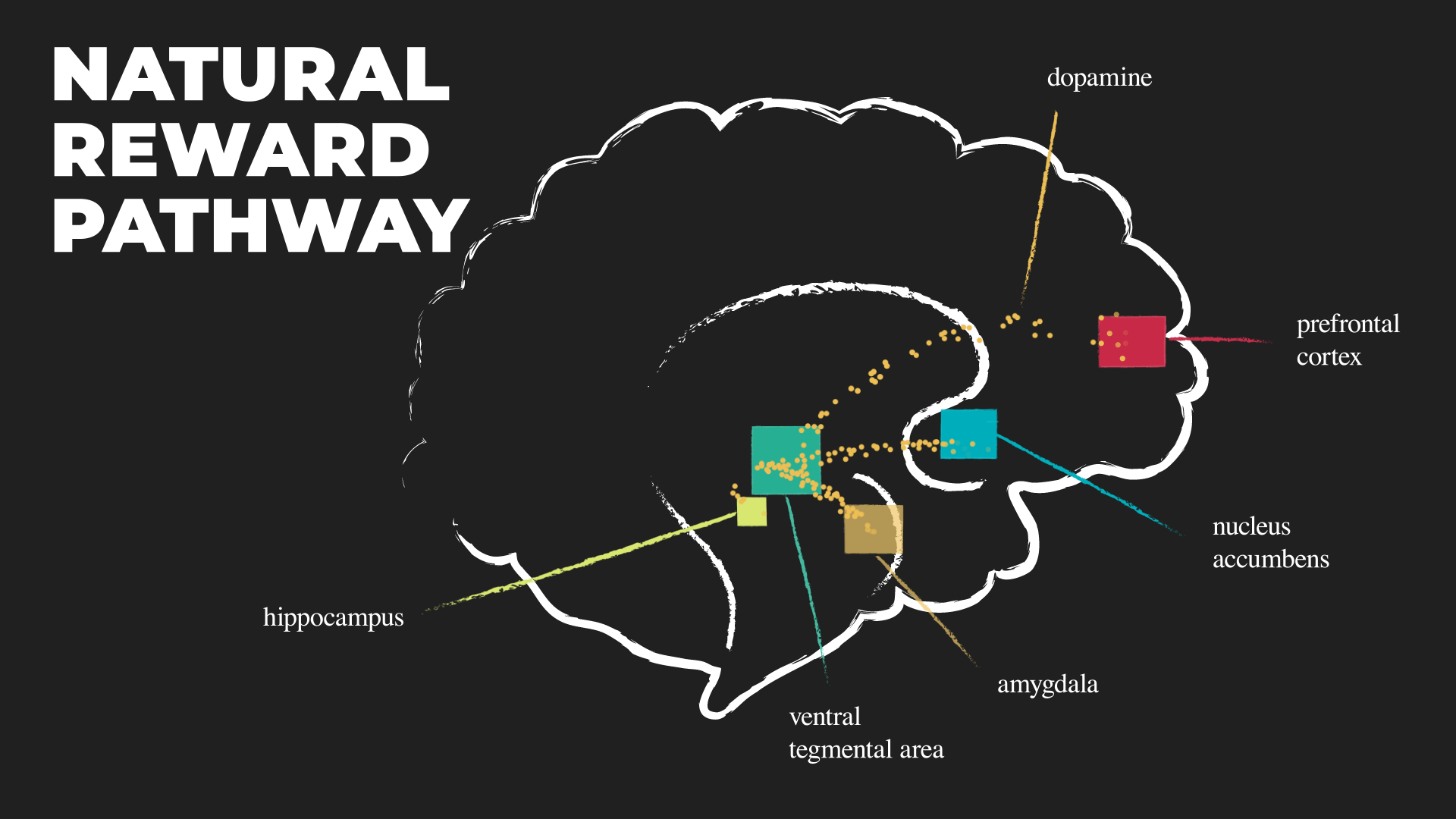Teen Brain Development
Building Blocks of the Brain

The neuron is the basic unit of communication in the brain.
Information between neurons is carried by chemical messengers (neurotransmitters) across gaps between neurons, called synapses.
Huge networks of neurons interact in this way to generate pathways for efficient communication among interconnected neurons.
Our Experiences Shape Our Brains

We are born with billions of neurons; nearly all the neurons we will ever have.
Connections between neurons, and the intricate pathways they form, are determined by our experiences; everything we think, feel, and do.
Through the process of synaptic pruning, synapses that are used a lot are strengthened, and ones that are not used are cut away.
Insulation of axons, by myelin, increases the speed and efficiency of communication between neurons in these established pathways that have been created through experiences.
The teen years are a unique time of opportunity for exploration, learning and memory.
During this time teens are training their brain with everything they experience, think, feel, and do, to help them become great at the things they are most interested in (e.g., academics, social relationships, activities).
The brain isn’t fully developed until approximately the age of 25.
Two Important Parts of the Brain

The Limbic System
The emotional brain
Deals with risk, reward, and feelings
One of the first parts of the brain to become fully developed, during the teen years

The Prefrontal Cortex
The rational brain
Thinks through decisions based on risk and reward
Not fully developed until 25-30 years old
